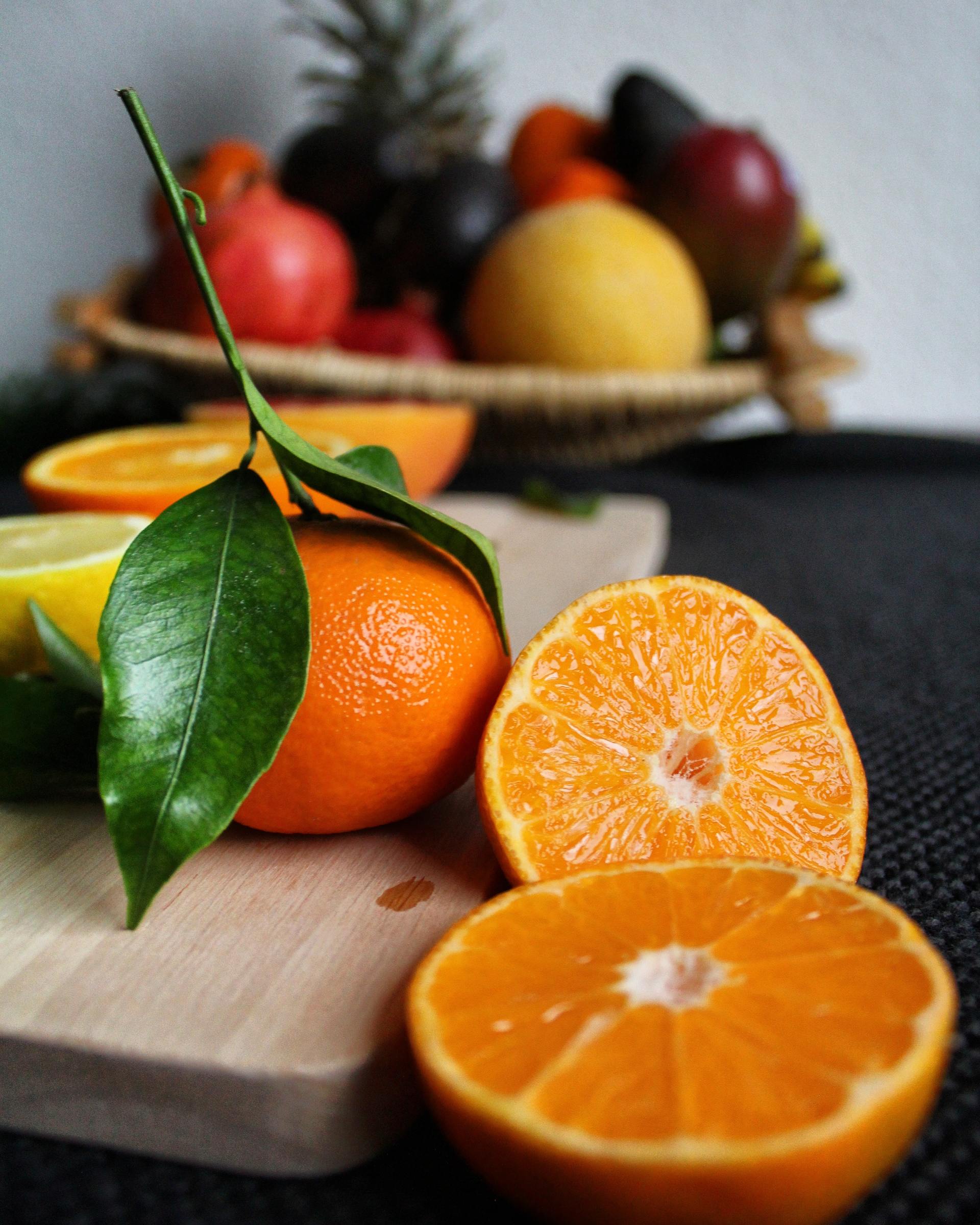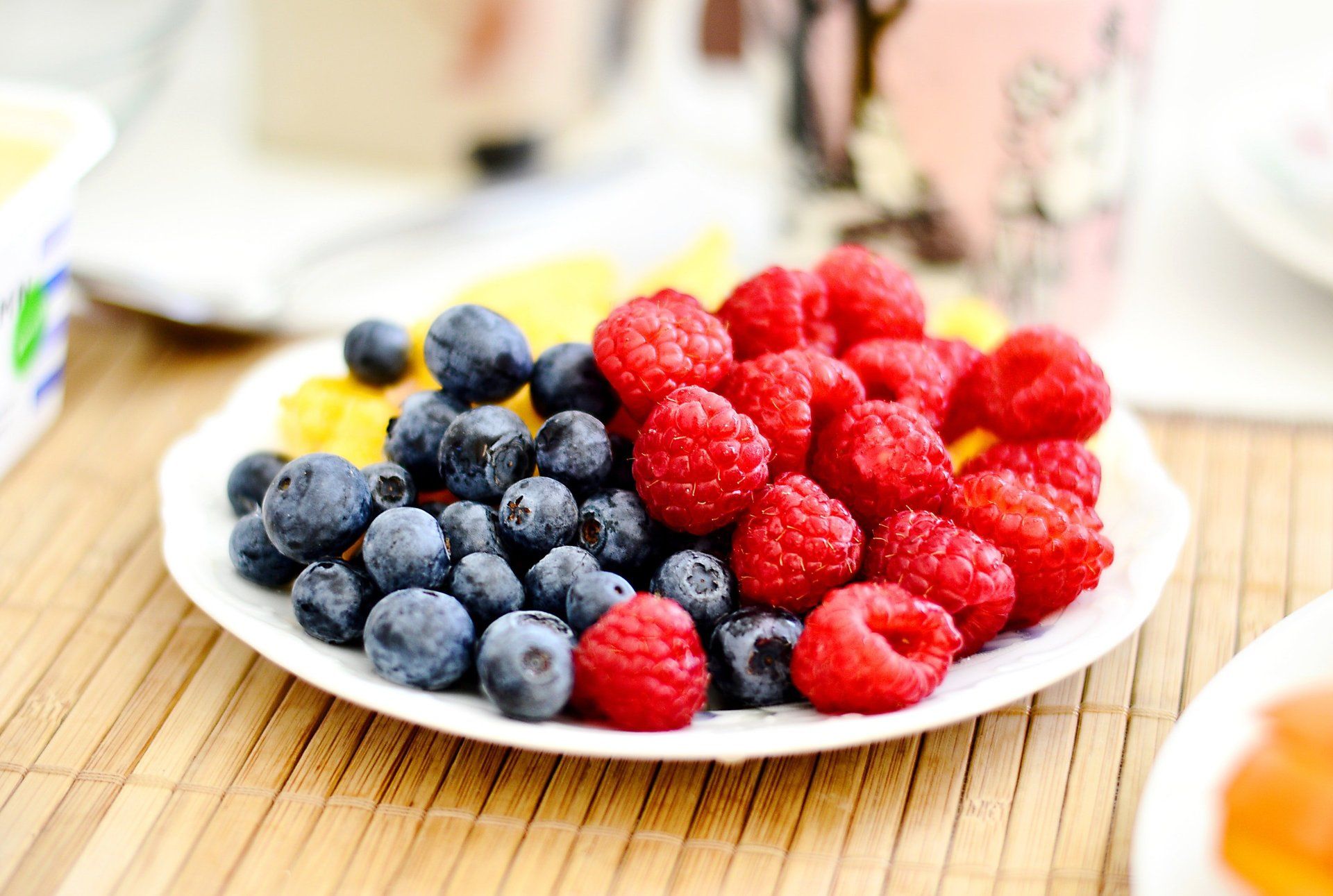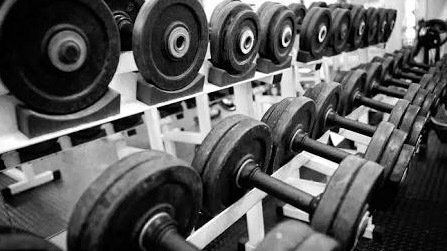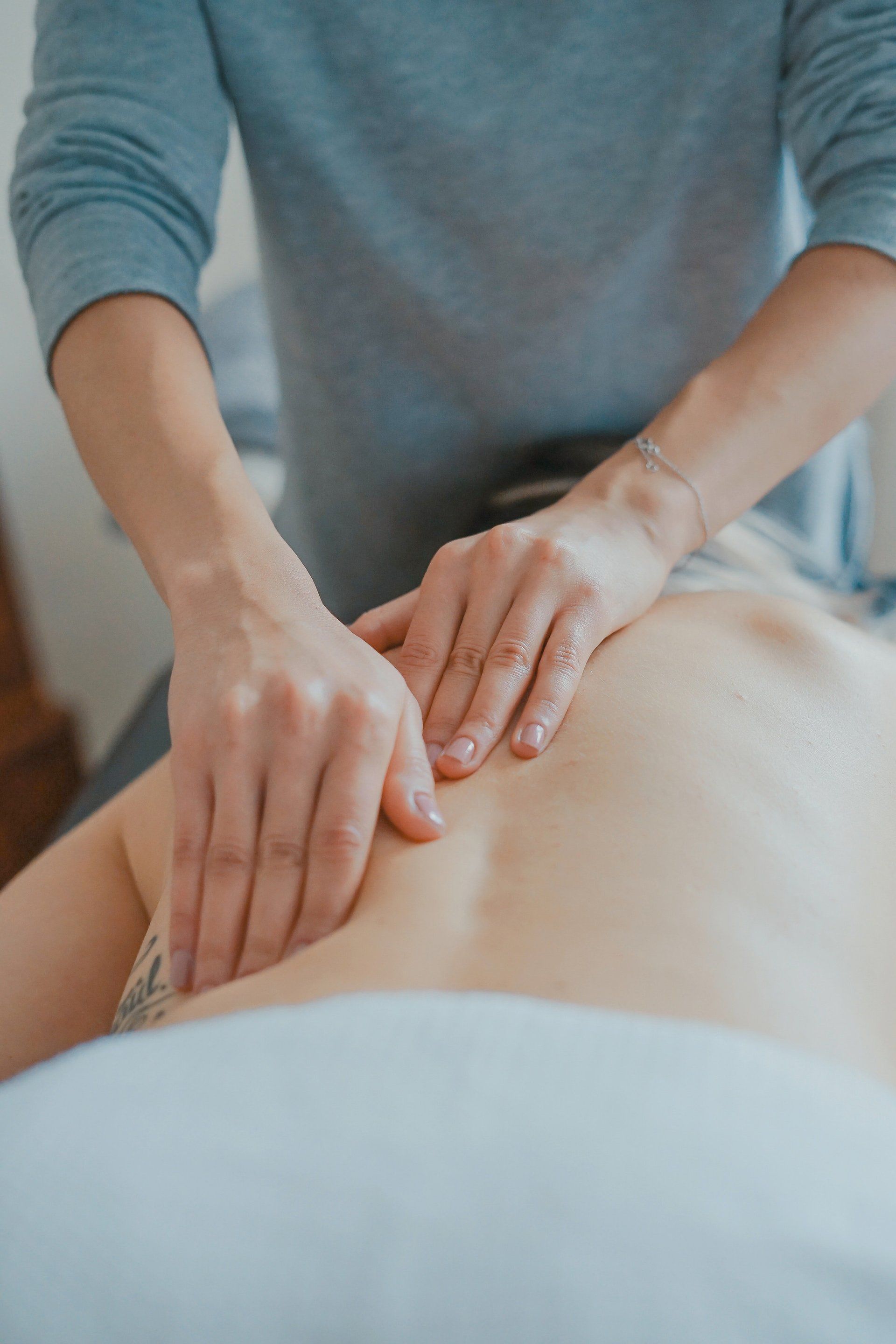
Regular chiropractic care is helpful for musculoskeletal conditions such as back pain, neck pain, and headache. Regular chiropractic care is also important for maintaining the functioning of other key components of your health and well-being such as digestion and metabolism. As the normal physiological activities of all your body systems depend on the nerve system for instructions, proper timing, and signaling, the nerve system itself needs to be kept in working order. This is the role of chiropractic care. Effective, healthy functioning of your digestive system and a well-orchestrated metabolic system will help you get the most benefit from the good food you're eating. Regular chiropractic care helps make this possible.

Many people have medicine chests in their bathroom, small shelving units filled with bottles of pills, capsules, and tablets. Others, instead, have first-aid and personal grooming cabinets in their bathrooms, containing rows of bandages, tubes of antiseptic, rubbing alcohol, and adhesive tape, as well as dental care supplies, shaving supplies, and sample-size bottles of shampoo. Of course, we can't always draw accurate conclusions about a person's lifestyle and level of health from the contents of his or her bathroom cabinet. But most of us, if we could choose, would likely want to focus on personal grooming and first aid rather than prescription medications. The key question is how we can actually make such a choice. From the medicine chest perspective, many people have various disorders that require them to take prescription medications on a short-term or long-term basis. Persons with type 2 diabetes need to take regular doses of drugs such as metformin or glyburide. Persons who have rheumatoid arthritis may be taking Imuran, Remicade, or glucocorticoids. If you have persistent high blood pressure, you may be taking a beta-blocker or an ACE inhibitor. If you've just undergone a root canal procedure, your dentist may have prescribed a two-day supply of Vicodin. But others have medicine chests filled with sleeping pills such as Ambien and Lunesta, cold and flu medications such as decongestants and antihistamines, and mood elevators such as Wellbutrin and Prozac.1 Again, many people have medical conditions that require prescription medications, but many others have come to rely on such drugs even though a sound medical reason for taking medication may no longer exist. In such circumstances, changes in lifestyle may provide more and longer-lasting benefit than that being obtained via use of no-longer-needed medication. For example, numerous studies have shown that regular vigorous exercise results in profound adaptations of one's personal physiology and biochemistry. Such changes consistently improve a person's mood and allow for a full night of restful sleep.2 Healthful alterations in diet also result in mood stabilization and facilitate deeper, more beneficial sleep.3 Lifestyle changes incorporating both regular vigorous exercise and healthful diets provide enhanced benefit. Of course, one should never discontinue prescription medications without consulting the doctor who has prescribed them. Implementing your long-term lifestyle enhancements is one of two necessary steps. The second step is letting your doctor know what you're doing and discussing with him or her the possibility of reducing the dose or even going off one or more of the "lifestyle" drugs you've been taking. By taking these steps you've begun the journey of converting your "medicine chest" into something else entirely. 1Tragni E, et al: Prevalence of the prescription of potentially interacting drugs. PLoS One 2013 Oct 11;8(10):e78827. doi: 10.1371/journal.pone.0078827 2Matta Mello PE, et al: Neuroscience of exercise: from neurobiology mechanisms to mental health.Neuropsychobiology 68(1):1-14, 2013 3Hryhorczuk C, et al: Metabolic disturbances connecting obesity and depression. Front Neurosci 7:177, 2013

You've finally decided to paint your kids' bedrooms. Not only that, but you're going to do it yourself. Congratulations. Or your rooftop gutters have become so filled with leaves that the only place for overflow rainwater to go is down the sides of your house and seep into the foundation, and you've decided to install a gutter protection system. And you're going to do that yourself. These may be great choices. DIY projects are self-affirming and self-empowering, and often provide real opportunities for personal growth and development. There may be substantial cost savings, or you just want to reconnect with your high school self who loved shop class. Regardless of the numerous possible motivations, the most important consideration in any home improvement project is safety. Aside from basic rules such as using protective goggles and always having a buddy supporting and stabilizing the ladder you're up on, safety around the home often depends on your own level of physical fitness. For example, if you're relatively out-of-shape, it's easy to strain a neck, shoulder, or lower back muscle when you're trying to apply paint evenly to a corner of the ceiling. Similarly, if you haven't done any vigorous exercise on a consistent basis in a while, do-it-yourself activities such as changing your car battery or even mowing your lawn can cause a lower back injury or even a twisted ankle or knee. Doing regular vigorous exercise provides many benefits In addition to preparing you for real physical work. Also, supporting your exercise and physical work is a specialized system of nerve endings known as proprioceptors.1 These nerve cells play a significant role in whether physical activity is done easily and well or, instead, results in an injury. Stated succinctly, proprioceptors tell your brain about your body's position in three-dimensional space. For example, if you're bending over to pick up two one-gallon cans of paint, your brain needs to know that you're ankles are bent at 20 degrees, your knees are bent at 80 degrees, and your hips are bent at 70 degrees. If this information isn't transmitted accurately or isn't received fairly instantaneously, you may suffer a lower back injury even though the paint cans themselves only weigh 8 pounds each. Proprioception becomes a critical system any time you go up on a ladder.2 Maintaining your balance depends on a moment-by-moment, two-directional stream of information between your brain and your bones, joints, muscles, and ligaments. Your nerve system and your musculoskeletal system do all the calculations required to enable you to work safely from the top step of your ladder. But if your proprioception system hasn't been optimally trained in a while and is, in a sense, out of shape, your balance and overall safety are at risk. Bad things can happen. From all points of view, including that of safety in the home, it's important to maintain your proprioception system in peak condition. You can easily do this by engaging in regular strength-building activities such as strength training and yoga and regular aerobic activities such as running, walking, swimming, and biking.3 Proprioceptor training is built-in to all forms of vigorous exercise. Safely and successfully completing your home improvement projects is one of the many benefits. 1Judkins TN, Scheidt RA: Visuo-proprioceptive interactions during adaptation of the human reach. J Neurophysiol 2013 Nov 20 [Epub ahead of print] 2Suetterlin KJ, Sayer AA: Proprioception: where are we now? A commentary on clinical assessment, changes across the life course, functional implications and future interventions. Age Aging 2013 Nov 14 [Epub ahead of print] 3Maitre J, et al: Chronic physical activity preserves efficiency of proprioception in postural control in older women. J Rehabil Res Dev 50(6):811-820, 2013

In recent years, media pundits around the world have proclaimed the extraordinary value of so-called super foods. Blueberries, broccoli, and especially kale have been described as possessing remarkable, almost magical, properties. What is it about these foods that makes them so good for you? From a basic perspective, adding fresh fruits and vegetables of all types to your daily diet is a very smart way to help improve your current levels of health and well-being. Fresh fruits and vegetables are so important that many national agencies and organizations have promoted the "five to stay alive" rule - these groups recommend eating at least five portions of fruits and vegetables each day.1 Fresh fruits and vegetables provide numerous health benefits, many of which are based upon the actions of biochemicals known as phytonutrients. Certain of these formerly mysterious compounds stimulate enzyme activity and others have actions similar to those of hormones. Many phytonutrients are powerful antioxidants that circulate throughout the body, scooping up and neutralizing free radicals. Free radicals are a normal byproduct of cellular metabolism, but too many of them will cause a lot of problems. Excess free radicals have, for example, been linked to development of chronic diseases such as heart disease, diabetes, and even cancer.2,3 Blueberries, broccoli, and kale are categorized as "super foods" owing to the abundance of phytonutrients they contain and make available to those who consume them. The takeaway is not to load up on kale, broccoli, and blueberries in an attempt to make up for years of less-than-optimal dietary choices. Rather, the goal is to begin, today, to implement a healthful, balanced food plan. Diets lacking fresh fruits and vegetables in general, and lacking super foods in particular, will not provide you and your family with the resources needed to enjoy productive, energy-filled days. Resolving to follow the "five-to-stay-alive" plan will add literally missing ingredients to your daily health regime. As you upgrade your nutrition, you're automatically upgrading the functioning of all your body's systems. With sufficient dietary phytonutrients, you can help prevent chronic disease, strengthen the immune system, combat the effects of obesity, and obtain numerous anti-aging benefits. The vast array of advantages that will likely ensue include more restful sleep; enhanced skin tone and muscle tone; increased reserves of energy throughout the day; and improved ability to focus and complete tasks successfully. Improved peace of mind will naturally occur as a consequence of these benefits, and an untapped reservoir of creativity may be revealed. Super foods truly provide super benefits. 1Liu RH: Health-promoting components of fruits and vegetables in the diet. Adv Nutr 4(3):384S-392S, 2013 2Wu TY, et al: Pharmacogenetics, pharmacogenomics and epigenetics of nrf2-regulated xenobioticmetabolizing enzymes and transporters by dietary phytochemical and cancer chemoprevention. Curr Drug Metab 14(6):688-694, 2013 3Pasko P, et al: Rutabaga (Brassica napus L. var. napobrassica) seeds, roots, and sprouts: a novel kind of food with antioxidant properties and proapoptotic potential in Hep G2 hepatoma cell line. J Med Food 16(8):749-759, 2013

"The Stress of Life" is a perennial bestseller by Hans Selye, written in 1956. Selye almost single-handedly introduced the notion of stress into the worldwide consciousness. By doing so, Selye changed the way we think about ourselves, our values, and how we conduct our lives. As Selye observed, stress is a double-edged sword. Many types of stress are good for people, both physiologically and personally. For example, Wolff's law states that bone will remodel (build more bone) along lines of mechanical stress. In other words, bone becomes stronger when it is subjected to physical loads. The physiological stress of weight-bearing exercise such as walking, running, and strength training helps prevent osteoporosis by making bone denser and more resilient. From a psychological perspective, the great German philosopher, Friedrich Nietzsche, famously stated in "Twilight of the Idols" (1888), "What does not destroy me, makes me stronger." Apparently, Nietzsche (writing in the 19th century) was far ahead of Selye in pointing to the benefits (and dangers) of stress. Life is filled with "good" stresses. A new love relationship, a new job, or a new baby may all provide great personal happiness and the experience of fulfillment and satisfaction. But each circumstance may also place new demands on us, calling on us to be and do much more than that of which we had previously thought ourselves capable. A person may develop all sorts of adaptive responses in attempts to cope with life's new requirements, but most of these adaptations are themselves stress-producing. Over time the adaptations become habits, stress becomes a day-by-day experience, and a host of physiological and psychological disorders and syndromes may appear.1,2 High blood pressure, diabetes, overweight/obesity, arthritis, insomnia, and depression may all be considered as long-term maladaptive responses to stress.3 Muscular aches and pains, muscle spasms, and headaches are common physiological responses to ongoing stress. A vicious circle develops in which stress leads to muscle tightness, which constricts blood vessels, which leads to headaches, which leads to more muscle tightness, more pain, and even more stress. One's day seems to become filled with stress and stress reactions. The good news is that means of ending these vicious circles of stress are available. Present time consciousness, regular exercise and a healthy diet, sufficient rest, and regular chiropractic care comprise a powerful tool kit for restoring balance in one's life. 1Wu EL, et al: Increased risk of hypertension in patients with major depressive disorder: a population-based study. J Psychosom Res 73(3):169-174, 2012 2Hristova MG: Metabolic syndrome - From the neurotrophic hypothesis to a theory. Med Hypotheses 2013 July 27 [Epub ahead of print] 3Martocchia A, et al: Targets of anti-glucocorticoid therapy for stress-related diseases. Recent Pat CNS Drug Discov 8(1):79-87, 2013

Most of us, at one time or another, have traveled for business. Some of us do this fairly often, and when we travel for business, we're usually getting where we're going by plane. Air travel used to be quick and easy. But lately, within the last ten years, maybe not so much. By now, we're used to long lines at security checkpoints, extended downtime waiting for our scheduled flights to depart, and an almost total absence of healthy food choices on our travel days. That said, there are several steps a smart traveler can take to help ensure that necessary travel does not take a toll on our health and overall well-being. The key to healthy travel is preparation. We want to avoid two main problems. First, we want to prevent the strains and sprains that may befall us when we battle unwieldy luggage in the cramped quarters of airplane cabins. Next, we want to avoid the colds, coughs, and other ailments we might contract by prolonged close contact with our fellow passengers and fellow conference attendees (or other business associates). The best means of avoiding travel-related sprains and strains is to make sure we're stretching and doing vigorous exercise on a regular basis. Ideally, exercising and stretching has been a part of our weekly routine for a long time. If not, the good news about exercising is that the best time to begin is right now. Begin your fitness program at least four weeks before your travel date. Don't try to cram everything in. That would be a big mistake. Rather, consult with your chiropractor to learn a beginner's fitness routine that will work for you. Begin your program and gradually build-up your capabilities over four or more weeks. Your fitness activities will prepare you for the physical work of lugging your bags around the airport and maneuvering them once you're inside the plane. Your stretching and exercise routines will improve your strength and flexibility, so you'll be better able to withstand the physical stresses of travel without suffering an annoying injury. The best approach to guarding against travel-induced ailments is to ensure that you're providing your body with sufficient sources of energy.1,2 Healthy nutrition is the key here. Again, ideally, you and your family have been engaged in healthy eating for some time. But it's certainly easy to get off track. As with exercise, begin your program of good nutrition at least four weeks before your trip. Make sure, on a regular basis, you're eating from all the major food groups. Make sure, too, that you're eating at least five servings of fresh fruits and vegetables per day. Such a daily diet will provide your body with the requirements for good health and sufficient energy that will enable a strong immune system. Your two key action steps, a regular exercise and stretching program and a balanced and complete nutritional program, will help you maintain good health and enhanced well-being when you're traveling and when you return home.3 1Rizzoli R, et al: Nutrition and bone health: turning knowledge and beliefs into healthy behaviour. Curr Med Res Opin Sep 23 2013 [Epub ahead of print] 2Roberts CK: Modification of insulin sensitivity and glycemic control by activity and exercise. Med Sci Sports Exerc 10:1868-1877, 2013 3Taggart J, et al: A systematic review of interventions in primary care to improve health literacy for chronic disease behavioral risk factors. BMC Family Pract 13:49, 2012




